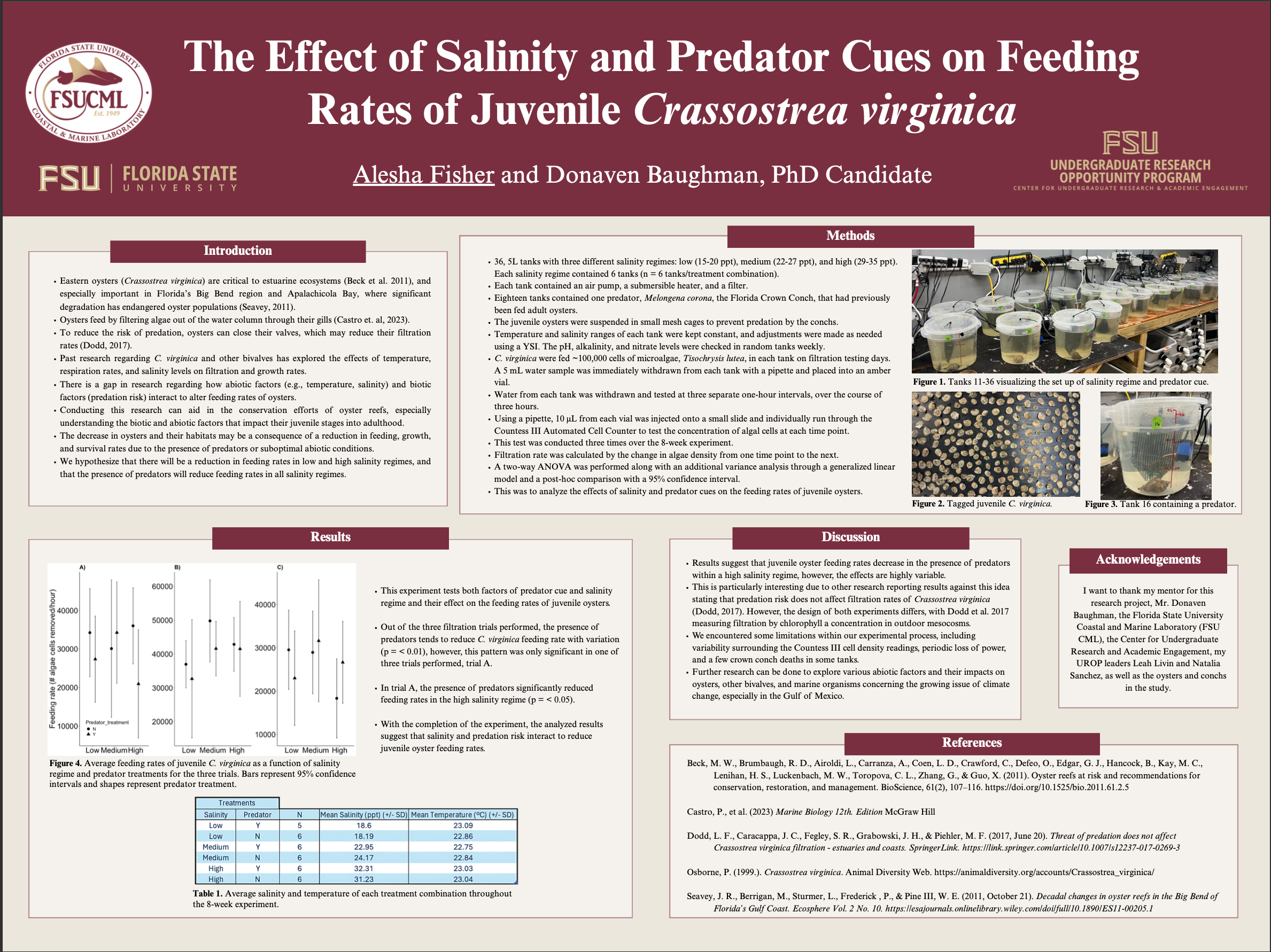Research Symposium
25th annual Undergraduate Research Symposium, April 1, 2025
Alesha Fisher Poster Session 3: 1:45 pm - 2:45 pm/ Poster #26

BIO
My name is Alesha Fisher and I am a first-generation, second-year student at Florida State University from Pembroke Pines, Florida. I am a biological sciences major, minoring in interdisciplinary science on a pre-medical track. In addition to my involvement in the Undergraduate Research Opportunity Program, I am involved in the pre-medical chapter of the American Medical Student Association, FSU CARE, and I will be pursuing a Medical Assistant Certification this summer. Growing up on the coast with a very nature-oriented family, I have always had a fascination for the ocean and its marine life. As a result, I've been privileged to work with Mr. Donaven Baughman at the FSU Coastal and Marine Lab, conducting research with him for the Undergraduate Research Opportunity Program. In my study, we analyzed multiple stressors, such as salinity or predator presence, to determine if they affected the feeding rates of juvenile oysters. I hope to be able to further my research experience during the rest of my time at FSU and throughout my career.
The Effect of Salinity and Predator Cues on Feeding Rates of Juvenile Crassostrea virginica
Authors: Alesha Fisher, Donaven BaughmanStudent Major: Biological Sciences
Mentor: Donaven Baughman
Mentor's Department: Department of Biology Mentor's College: College of Arts and Sciences Co-Presenters:
Abstract
Crassostrea virginica is known as an important marine organism and bivalve that consumes algae through the filtration of seawater, especially in the areas of Florida’s Apalachicola Bay. If threatened, C. virginica close their valves to reduce feeding rates to prevent predation. As a consequence of the reduction in feeding, the presence of predators may lead to a decrease in oyster growth or survival, possibly leading to a decrease in oyster habitats. C. virginica were kept in small mesh cages suspended between 36 five-liter saltwater tanks containing three ranges of salinity: low, medium, and high, and a constant temperature. Adjustments to these values were made as needed. Eighteen tanks contained the predator Melongena corona (Florida crown conch). On filtration testing days, the C. virginica were initially fed around 100,000 cells of Tisochrysis lutea, a microalgae. A 5 mL vial sample was taken from each tank at three time points. The filtration rate was calculated by the change in algae density from one time point to the next. In trial A, the presence of predators significantly reduced feeding rates in the high salinity regime (p = < 0.05), while the other two trials were not significant but held similar trends. These results allow for future research on the effects of abiotic and biotic factors on the feeding rates of C. virginica. Furthermore, the results can show how oyster growth rates in areas containing a large predator presence may be affected.
Keywords: Oysters, Feeding, Salinity, Predators, Marine


